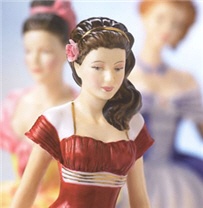We live in the world with a lot of different ethnical groups. We hear the names of different countries and nationality adjectives and nouns in the news all the time. Without proper practice students will make mistakes as they face problems with spelling, pronunciation, and memorizing different forms. That is why it is so essential to help them to put the words to work at your lessons. The first words are learnt at the beginners level but even upper-intermediate students need to expand their nationality vocabulary when they talk about emigration or Olympic Games.
As a teacher you need to choose which words you want your students to learn. You can use your course book as a framework but you can use your own materials too.
How To Proceed
Stage 1: presentation of the vocabulary with the help of visual aids
The teacher can use the world map or flashcards with people in national costumes to introduce new vocabulary.
Example 1: "Look at the map. This is Italy. Italians live in Italy. They speak Italian".
Example 2: "Look at this picture. This is Pedro. He is from Spain. He is Spanish. He speaks Spanish".
You can stick your flashcard on to the board and write key words underneath. In this way you introduce both the spoken and the written form of the vocabulary.
Stage 2: elicitation
-
1
The teacher points to different flashcards and asks the students to answer the questions. For example:
T: Where is this man from?
S: He is from China.
T: What is his nationality?
S: He is Chinese.
T: What language does he speak?
S: He speaks Chinese. -
2
The teacher asks the students to complete the sentences. For example:
He lives in Madrid. He is …
She is from China. She is …
They are from Tokyo. They are …
My friend lives in Russia. He is … -
3
The teacher asks the learners to use the nationality adjectives in a sentence. They may make any sentences they like or you can choose a certain topic or grammar to review.
T: I like Italian pizza and Swiss chocolate. What kind of food do you like?
S1: I like Chinese food.
S2: I like English muffins.T: Which language is more difficult Russian or Chinese?
S: I think Chinese is more difficult than Russian.
T: Are Japanese cars more popular than German cars?
S: Japanese cars are more popular than German cars. -
4
Ask learners to create a little story using new words. Tell them your own story to provide a good model.
I am a teacher. I teach English. I like to read English and American literature. I enjoy listening to French songs. I drive a German car. I love Italian pizza and pasta. I’d like to go to Spain and study Spanish.
-
5
Ask your students to listen to world news and jot down all nationality words they hear. Then compare the notes.
-
6
Find a funny joke with an interesting plot and ethnical stereotypes. Stereotypes are different from racial prejudices and are not offensive. Ask the students to read the jokes and discuss the way people see people of different nationalities.
Stage 3: focus on grammar
-
1
You need to show the difference between the nationality adjectives and nouns. Write on the board: He is from Poland. He is Polish. He is a Pole. It will take a minute to explain that we should use an indefinite article with a noun. You can also mention that nationality adjectives are also used to describe foreign products, culture and history while the nouns describe the people of that country. It is also important to draw their attention to capital letters of these words.
-
2
Divide your students into 2 groups. Give them the handout with nationality adjectives and nouns. For example: Spanish – a Spaniard; Swiss – a Swiss; Greek – a Greek; Swedish – a Swede; etc.
Ask them to put the words into two different categories. It is not that difficult to see that some adjectives and nouns are the same but some are different. Ask the representative of each group to come to the blackboard and write the words from one of the categories.
-
3
Ask one of the students to choose a nationality noun. Other students should try to guess the word. For example:
S2: Are you a Pole?
S1: No, I am not. I am not a Pole. (I am not Polish.)
S3: Are you a Frenchman?
S1: Yes, I am.
Stage 4: revision
To round up your lesson you can use the photos of celebrities and ask the students to identify their nationalities. If they have no idea about someone’s background they can ask questions and then come up with the answer.
T: Millions of immigrants have moved to the USA. Some of them became very famous. Look at this picture. Who is this man?
S1: His name is Arnold Schwarzenegger. He is the governor of California. He is Austrian – American.
T: Do you know this actress?
S2: Her name is Nicole Kidman. Where was she born?
T: She was born in Hawaii but lived in Australia.
S2: She is Australian – American.
T: That’s right.
P.S. If you enjoyed this article, please help spread it by clicking one of those sharing buttons below. And if you are interested in more, you should follow our Facebook page where we share more about creative, non-boring ways to teach English.








